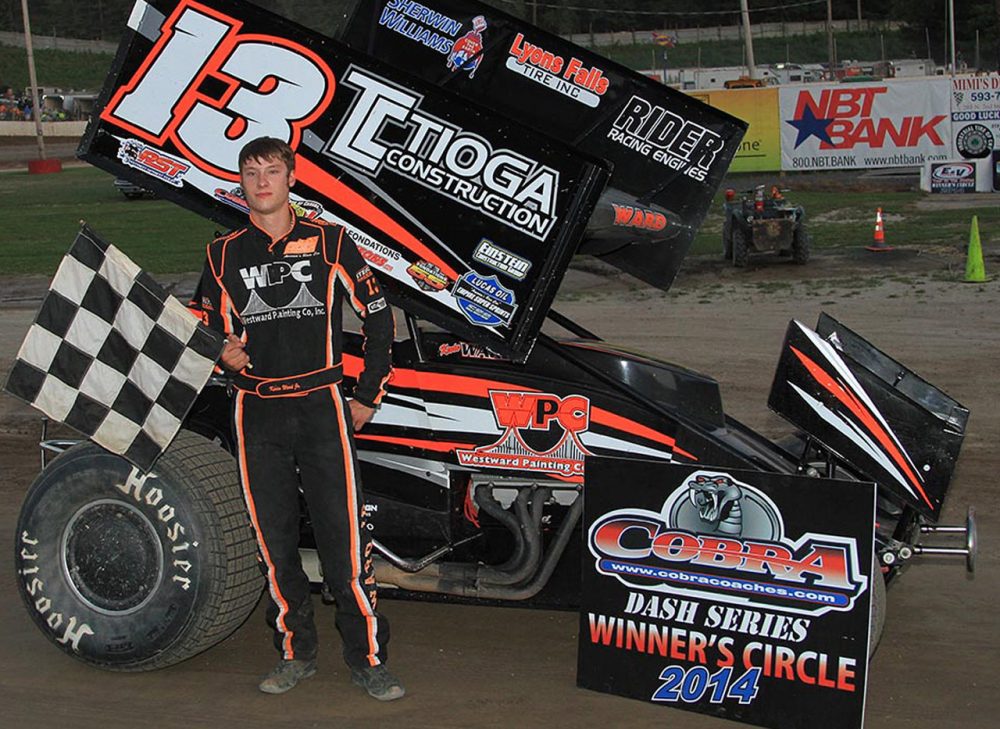Advertisement
Making Racing Safer In The Wake Of Kevin Ward's Death

Last Saturday night, 20-year-old sprint car driver Kevin Ward Jr. lost his life. We may never know the exact circumstances of the tragedy, but we do know this: Ward's car crashed after being crowded by the car driven by NASCAR superstar Tony Stewart, who moonlights in sprint cars. Ward left his vehicle and approached Stewart's car. Seconds later Stewart's car struck and killed him.
ESPN The Magazine senior writer Ryan McGee wrote an essay about the inherent dangers in auto racing. He joined Bill Littlefield.
BL: Kevin Ward left his vehicle, obviously angry, while the rest of the field was under caution. He is far from the first driver to do that. Given the obvious risks, why do so many drivers leave their cars?
RM: There's an adrenaline level that these drivers are operating at that we don't really understand because they're just not built like the rest of us. And in that situation, too, where it's a 20-year-old, young, up-and-coming racer who one day hopes to be Tony Stewart when he grows up, you know, it was an opportunity to let Tony Stewart know, 'I'm out here. And I'm not going to let you bully me.'
I've seen this so many times over the years where drivers will just get out of the car and just walk out into traffic. But to the eye it's very deceiving because you've been watching cars go 190 miles an hour all afternoon; under caution it looks like they're crawling along. The truth is they're doing about 55 miles per hour. So for a driver to walk out onto the racetrack, he's literally walking out onto the highway in your local city. When the emotion takes over and the adrenaline takes over and you want to make a point, common sense sometimes doesn't come into play.
BL: In the days following the accident, some news outlets branded Stewart as a hothead with a temper — and certainly there is historical evidence for that characterization — but auto racing insiders and fellow drivers have been quick to describe him as a man with a big heart who would never intentionally injure another driver. Is the idea of intent just too horrifying for those in motorsports to contemplate?
RM: A little bit. And Tony's a very complicated person. I wouldn't call him a friend, but he's someone that I have been around, someone I have covered, someone I have interacted with professionally and personally for the better part of a decade and a half. And there are moments when Tony's rage takes over and there are days when you see this gentle person that people are talking about. Ten, 15 years ago, he might cuss me out one day because I asked him a question after a race and then a week later he throws his arm around me and asks me about my family.
But do I think there was any intent to hurt this kid? I don't believe that. And when he goes back to these short tracks, he's not doing it to bully young guys. He's not doing it to bully the weekend warriors who are bankrupting their families just to race on the weekends. He's doing it because — he's telling these short track promoters, 'Use my name to sell tickets.' He owns short tracks himself. He's done more for short track, Sprint car racing than arguably anyone in the history of that sport. So was there intent? No. But it certainly was a terrible accident that one day we'll hopefully know all the truth about.
Advertisement
BL: NASCAR and numbers of lower-level dirt tracks have instituted new rules to discourage drivers from leaving their disabled vehicles — except, of course, in the case of fire. Undoubtedly, drivers, sports writers and spectators are more aware today than they were just over a week ago of the dangers of doing that, but how long will that awareness last?
RM: Well, the fact that the rules have been tightened up — and that announcement took place on Friday morning — now they're going to be enforced and now they're a little more defined. And so what will happen, typically, is short tracks will follow. Other sanctioning bodies will follow.
You look back 13 years at the death of Dale Earnhardt. The sting of that has never gone away. And when you walk through the garage, particularly in the NASCAR Sprint Cup Series now and you see the safety implements that are on these race cars that weren't there 10 years ago, and some that weren't there five years ago, — that all stems from losing Dale Earnhardt, the biggest star in the sport. Now, keeping drivers in the race car, ultimately, I think that will be the legacy of Kevin Ward Jr., just like it was for Dale Earnhardt Sr.
This segment aired on August 16, 2014.